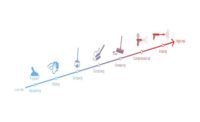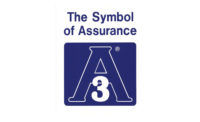Optimizing food safety through good cleaning tool maintenance

The importance of good cleaning tools maintenance is now recognized by the Global Food Safety Initiative (GFSI) and reflected in their approval of global food safety schemes, including the British Retail Consortium (BRC) and the Food Safety System Certification (FSSC), which now contain sections specifically related to this.
To comply, facilities need cleaning tools as a source and vector of contamination. Typically, cleaning tools are used over large surface areas and are capable of collecting (and subsequently spreading) contamination. Unpublished data from Campden BRI, UK, used to establish guidance on effective microbiological sampling of food processing areas showed that 47% of the cleaning tools sampled were positive for Listeria monocytogenes. Whether this observation was due to poor hygienic practices or to the poor hygienic design of the cleaning tools (or both) is unknown. Regardless, the observation gave rise to the concept of cleaning tools as major “collection” points for the isolation of pathogens.
Decontamination of your cleaning tools
To minimize the risk of cleaning tools becoming a source and vector of cross contamination, they must be appropriately cleaned, disinfected and maintained.
With regard to this, cleaning and disinfection methods/protocols should be developed and validated for cleaning tools, as appropriate, based on risk assessment. Cleaning and disinfection of cleaning tools should be conducted to an appropriate, defined frequency/schedule, based on risk assessment. And, operators should keep documentation and records of these actions, so they can be used internally and in support of audits and due diligence defense, if required.
The methods and frequencies of cleaning tool decontamination will depend on many things, including:
- What is being cleaned, e.g., environmental or food contact surface;
- Type of contamination, e.g., microorganisms, allergens, foreign bodies, product residues (e.g., meat or fish species, organic or non-organic);
- The risk level of the food being produced, e.g., low risk, high care, high risk, ambient stable;
- Type of food product/environment, e.g., wet, dry;
- Type of clean, e.g., interim, daily, weekly, periodic deep clean;
- Type of consumer, e.g., infants, elderly, allergic, health compromised.
Wet cleaning
In general, food industry cleaning tools used in wet environments are decontaminated at the end of the production day, or more frequently if required, through immersion in warm water containing a detergent; by use of a hose (low, medium or high pressure); and/or use of manual cleaning; or by loading it into an on-site cleaning system, like a tray washer. These actions are usually followed by the application of a chemical disinfectant, before being rinsed and hung up or placed in an oven to dry.
During the day, cleaning tools may also be placed in a “sanitizer bath.” The sanitizers used in these baths tend to be a combination of a detergent-disinfectant chemical that is perceived to help remove soiling while disinfecting the tools. However, the organic soiling on the cleaning tool can quickly reduce the efficacy of the disinfectant component of the sanitizer, and act as a protective barrier to the microorganisms present. Consequently, if the sanitizer solution is not changed at an appropriate frequency, it can became a “soup” of food debris and microbes that can increase the risk of cross contamination from the cleaning tool.
More recently, some manufacturers have started to use industrial dishwashers or washing machines to effect both cleaning and a thermal disinfection step into the decontamination process. A few food manufacturers also use an autoclave to subject the tools to a thermal sterilization step following cleaning.
Dry cleaning
In some dry goods industries, cleaning tools are not wet cleaned at all, for fear that the moisture introduced by the cleaning may not be completely removed by drying, subsequently leading to microbial growth and increasing the risk of cross contamination. Instead, tools are used until they are deemed “unfit for purpose” and then thrown away and replaced. In some high-risk dry goods environments, brushes are sometimes just used once and thrown away rather than risk the possibility of cross contamination. This is an expensive and wasteful practice, but it has been deemed the best way to ensure food safety for this critical consumer group.
Developing a decontamination program based on risk assessment
The best way to ensure that an effective decontamination program is developed is to base it on risk assessment.
This requires the determination of risk based on consideration of the hazards present, the likelihood that they will occur and the severity if they do, followed by the subsequent implementation of appropriate controls to reduce the risk to an acceptable level. It is essential that those involved in conducting the risk assessment have the appropriate level of knowledge, experience and access to existing information to enable them to competently identify the hazards, assess the risk and implement the correct controls. Professional cleaning tool and cleaning chemical manufacturers/suppliers should be able to offer additional bespoke information and advice on the most appropriate and effective way to clean/use their products in any given food production environment.
The Hazard Analysis and Critical Control Point (HACCP) system can also be applied to the development of a cleaning and disinfection program for control of the hazards associated with cleaning tools.
Start by identifying any hazards (biological, chemical or physical agents) associated with the cleaning activity that have the potential to cause harm. Typical hazards associated with cleaning tools include,
- Food debris (including allergens).
- Plastic (fragments and bristles).
- Cleaning chemical residues.
- Food poisoning and spoilage organisms.
Likelihood and severity (risk assessment)
The risk associated with each hazard is determined by comparing the likelihood of the hazard occurring with the severity. If the likelihood and severity are both low, then the risk will be low and the hazard may not require control. However, if the likelihood and severity are both high, then the risk will be high and controls should be considered.
Priority should be given to the control of the high-risk scenarios identified.
Assessment of likelihood and severity will be based on knowledge, experience and any existing information available.
Controls
Controls are any action and activity that can be used to prevent or eliminate a food safety hazard or reduce it to an acceptable level.
Validation, monitoring, verification of cleaning tool decontamination
There is a requirement within FSSC 22000 to validate, monitor and verify cleaning tool decontamination.
Validation is the development of a consistently effective and appropriate method of cleaning tool decontamination.
Different methods may need to be developed for different types of cleaning tool or for the same type of cleaning tool used for different tasks. The method development may require a degree of trial and error to ultimately determine an effective method that consistently achieves the level of decontamination required.
Each different method should detail the:
- items of cleaning equipment (types and usage) that the method is suitable for;
- cleaning and disinfection chemicals to be used (water; detergent and disinfectant, including supplier, name and product code). The temperature, concentration and contact time of the chemicals used should also be provided;
- decontamination equipment to be used, e.g., brush, tray washer;
- decontamination method/actions, e.g., scrubbing, rinsing;
- decontamination frequency, e.g., daily, weekly;
- level of decontamination required and how this should be measured and recorded.
Monitoring is the use of methods that determine whether the validated cleaning methods have been conducted effectively in a timeframe that allows for rapid detection and correction of any shortfall in the decontamination achieved. Should shortfalls be identified, the decontamination procedure can be repeated immediately until the desired level is achieved.
Examples of monitoring methods include the use of:
- Visual inspection.
- Adenosine Tri-Phosphate (ATP) rapid detection sampling swabs.
- Protein rapid detection sampling swabs.
- Allergen rapid detection Lateral flow sampling devices.
The analytical monitoring methods used should themselves be validated. This validation should be conducted by the method manufacturer (will it work under defined controlled conditions of use) and by the end user (will it work under my conditions of use?). Just because the manufacturer has validated the method, doesn’t necessarily mean it will work at point of use.
Verification is the use of methods, in addition to monitoring, that determine whether the validated cleaning methods have been conducted effectively and/or are still effective.
These tend to involve sample analysis where the results can take longer (days) to obtain and the review of monitoring data (trend analysis).
Examples of verification methods include the use of:
- Microbial sampling and analysis.
- Periodic review of visual inspection check/sign off sheets.
- Periodic review of ATP, protein, allergen, microbial swab test results.
Should individual monitoring and verification results, and/or a review of past results, indicate an acute or chronic hygiene issues, it should prompt the implementation of corrective actions. These could include a review of the validated decontamination method and the monitoring and verification sampling methods.
Records of method validation, monitoring and verification and of the results, reviews and corrective actions taken should be kept for auditing/due diligence purposes.
Cleaning tool preventative maintenance
Both BRC and FSSC 22000 require cleaning tools to be maintained through appropriate decontamination, inspection, replacement and storage.
Cleaning tools should be regularly inspected (to a defined schedule, as part of the cleaning and sanitizing program) for damage and wear and tear and replaced as appropriate, based on risk assessment. It is recommended that descriptions/images of what is acceptable and what is not and records of tool inspection and replacement be kept for auditing/due diligence purposes.
Do not make poor quality repairs to damaged equipment, as this can increase the safety risk to the product.
Cleaning tool storage
Storage of cleaning tools can help minimize damage to the equipment and cross contamination. It also improves efficiency by providing a place for the tools to be stored and quickly found when needed.
Use of color-coded cleaning tool storage systems and color-zoning plans provide a visual check that only tools color-coded for use in that area are used. It also aids compliance with HACCP pre-requisite programs with regard to allergen and microbial control, and provides auditors with evidence of equipment control. Some cleaning tool manufacturers can help develop appropriate color-zoning plans.
Cleaning tools can either be stored on color-coded wall racks or on shadow boards, which can provide a quick visual check as to whether something is missing from a cleaning station. Shadow boards can also be color-coded to provide a visual check that the correctly-colored tools are being used and stored in the correct area.
To minimize the risk of cross-contamination, brushes, squeegees, scrapers etc. on racks and shadow boards should be stored:
- Head down.
- With heads distant from other equipment handles.
- In a single row, so that equipment above does not drip onto equipment below.
- On racks and shadow boards that are regularly cleaned and disinfected, as appropriate.
Racks and shadow boards should be either freestanding, mounted at a distance from the wall that allows the wall and the back of the rack/board to be cleaned or secured to the wall by an easy attach/detach mechanism that makes them easy to remove and clean behind.
Shadow boards should be made of waterproof/non-absorbent material. Ideally, both the board and the printing inks used for the shadows should be food contact-compliant and temperature and cleaning chemical-resistant.
The use of colored stickers should be avoided, as they can peel and flake (creating a foreign body issue) or bubble and crack (creating a crevice for contamination to accumulate in).
Looking for a reprint of this article?
From high-res PDFs to custom plaques, order your copy today!






